Achaemenid Gordion
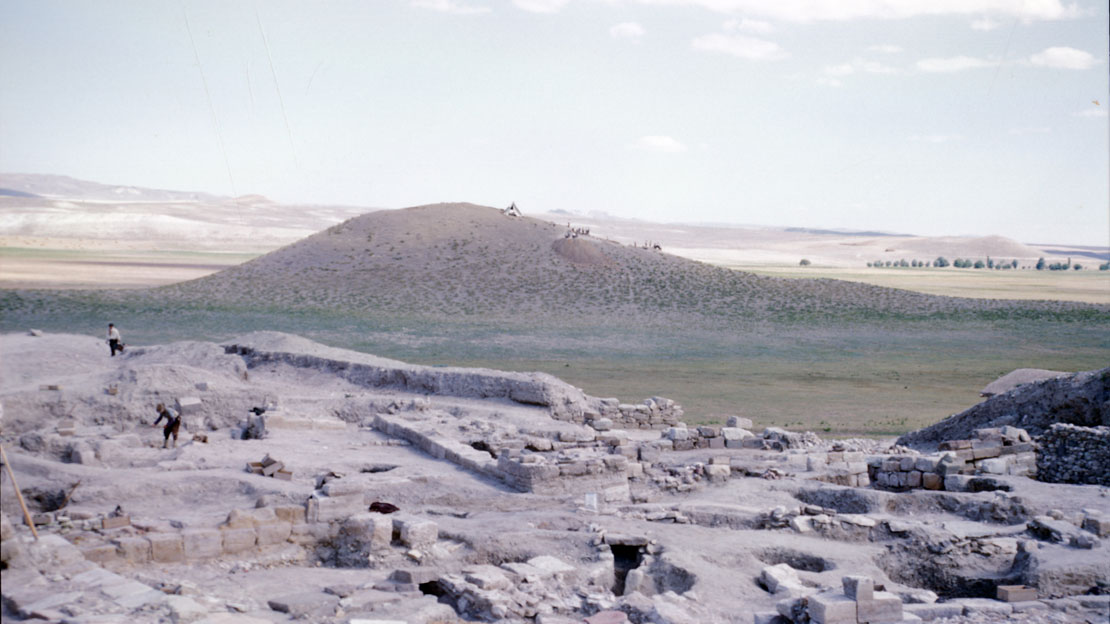
In 546 BCE the forces of the Lydian king Croesus were decisively defeated by the Persian army commanded by Cyrus II “The Great.” As a result of this campaign and subsequent “mopping up” operations, the Lydian state, which included Gordion, was integrated into the Persian empire along with the rest of Anatolia. Called “Achaemenid” after the name of the ruling dynasty, this empire was the largest political entity the world had yet seen, extending at its height from the Balkans to India, and surviving for two centuries until its conquest by Alexander the Great.
The Persians divided the ancestral Phrygian regions into two satrapies (administrative provinces). Hellespontine Phrygia had its capital at Daskyleion (near the Sea of Marmara, approximately 250 miles west of Gordion); it was into this satrapy that Gordion was placed. The other satrapy, Greater Phrygia, comprised the southern part of the old Phrygian lands; its center was at Kelainai (modern Dinar), again far away from Gordion.
Gordion is one of the few settlements in Turkey for which there have been large-scale excavations of Achaemenid levels (ca. 546–334 BCE). Evidence for the Persian attack of 546 on the Lower Town defenses includes a plethora of arrowheads (some of them stuck fast in the fortification walls), a monumental assault ramp built against the Küçük Höyük fortress complex, skeletons of dead soldiers inside the building, and the destruction of the defensive installations after the attack.
When the Persians captured Gordion, it did not decline in size or prosperity, but instead remained stable and perhaps even grew to its maximum size. Even though Gordion was no longer a capital, it was still an important district center with a strong economic base and largely peaceful conditions. Indeed, the first few generations of Persian rule seem not to have witnessed signficant change in the overall character of the settlement.

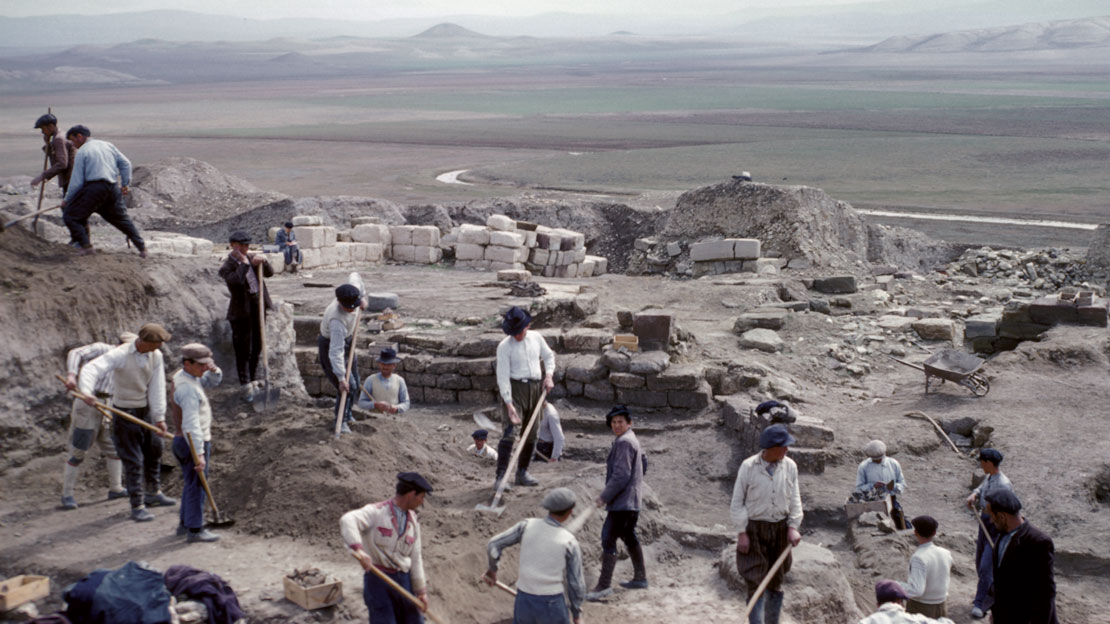
Early Achaemenid Gordion
The earlier part of the Achaemenid period at Gordion (ca. 550–400 BC) is marked by strong continuity from the preceding Middle Phrygian phase. On the Citadel Mound, the existing Iron Age architectural layout of the east citadel was largely retained, suggesting considerable functional continuity and a very high status profile, even though the place was no longer a royal center or even a satrapal capital. Gordion’s elite status at this time is also borne out by the Greek writer Xenophon’s statement (Hellenika I.iv.1: 33) that in 408 BCE the satrap, Pharnabazos, wintered at the site with a delegation of Athenian ambassadors.
The continuation of tumulus burials into the early Achaemenid period is another indication of continuity from the Iron Age at Gordion, and again indicates the presence of powerful elites. Although it is difficult to assign some of the sixth century BCE Gordion tumuli to either side of the Persian conquest, one of the most striking, Tumulus A, is datable ca. 540–530 BCE. This was a very wealthy female cremation burial with a dismantled vehicle (hearse) and harness fittings, as well as a striking quantity of precious metalwork, including a silver mirror and a gold necklace. The practice of depositing vehicles within elite burials finds close parallels from the same period in the western parts of the Hellespontine Phrygian satrapy (e.g. at Üçpınar.)
The cultural impact of the Persians on the Phrygians seems to have been limited at first, although it is clearly detectable in the archaeological record. Already in the second half of the sixth century BCE some Achaemenid vessel types came into use at Gordion, and local craftsmen incorporated them into their own pottery and metallic repertory. Women also began to wear some Achaemenid-type jewelry, in addition to Levantine, Greek, and local types. One excellent piece of evidence for actual Achaemenid administration is provided by a cylinder seal with a Persian name incised in Aramaic on it. Otherwise, indications of imperial settlement are rare at Gordion, in contrast to the capitals of the two Phrygian satrapies, and to Lydia and Caria.

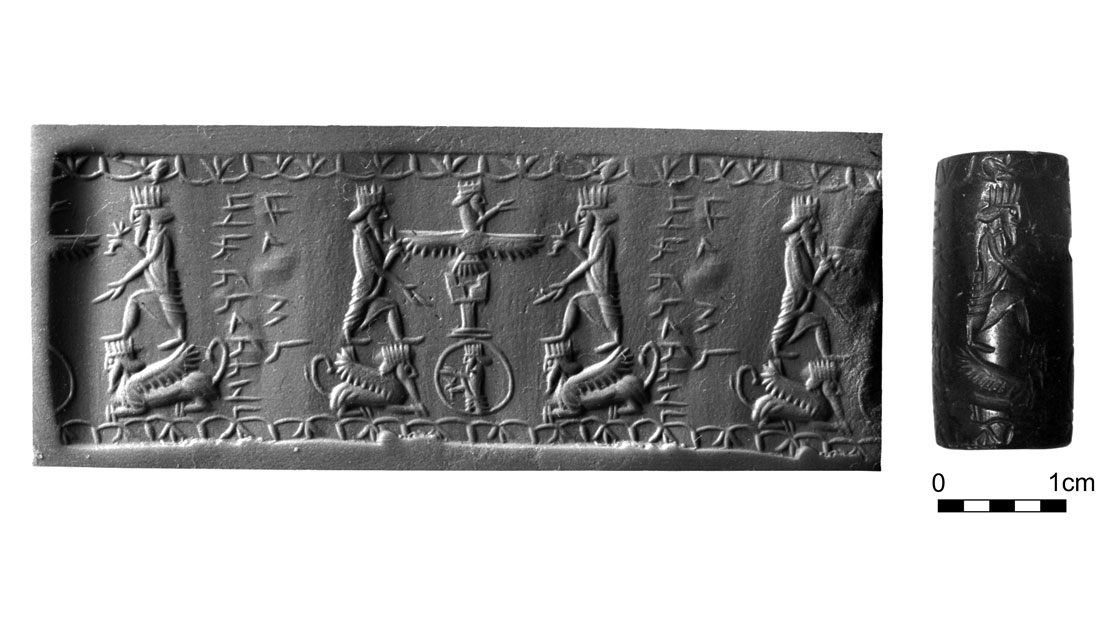
Despite the evidence for continuity, there were clear changes to Gordion’s built environment during this period. On the eastern side of the Citadel Mound, and datable to around 500 BCE, some expensive building programs were carried out, most notably the “Painted House,” and the renovation and partial demolition of Middle Phrygian Building A, combined with the addition of the “Mosaic Building.” Although differing markedly in their respective layouts, these buildings feature the same types of architectural terracottas, which suggests that the roofing systems were similar, and they probably belong to a single building program. The Painted House and Mosaic Building represent new architectural types at Gordion, and reflect the new cultural attributes of the Persian administration.
In the western part of the Citadel Mound and in the Lower and Outer Town areas, excavations have revealed substantial houses with stone foundations as well as semi-subterranean “pit dwellings.” This variation in house form and domestic installations (hearths and ovens), coupled with statistically significant differences in the sample of animal bones, suggest the possibility of ethnic neighborhoods in Achaemenid Gordion. The extent of the Outer Town in the Achaemenid period is uncertain, but all trenches here produced evidence for several phases of Achaemenid period architecture.
Gordion continued to serve as an economic center throughout the Persian period, and it may have increased in importance. The production of stone, bone, ivory, and metal artifacts is well-attested. High quality ceramic imports include Attic and Lydian finewares, and imported Greek wines are evident from the late sixth century BCE onward.
Building A and The Mosaic Building
Located southwest of the east citadel gate, Building A featured a long row of several conjoined megaron-buildings over 80 m in length. Around 500 BCE it experienced a major alteration: the two megarons at the northeast end were renovated and continued in use; at the same time, two of the megarons to the southwest were demolished to make way for a different kind of complex—the Mosaic Building. This was a multi-room layout with a paved court of large, worked andesite blocks, leading to rooms decorated with colorful river-pebble mosaics in meander patterns. One red-painted column base still stood in its original position. There was once probably a matching base on the other side of the entrance, leading the visitor in an axial procession from a paved exterior court to a mosaic anteroom and then to a central throne or cult room, also decorated with a mosaic floor. The exact function of this complex is uncertain, but it may have been a Fire Temple.


The Painted House
The Painted House was highly unusual—a very small, partly subterranean building inserted between the back-ends of two pre-existing (Middle Phrygian) megarons, Buildings C and G, which fronted onto the outer court just within the citadel gate. Its entrance was unlike any other in the citadel. Instead of being oriented toward the courtyard, it faced the nearby back wall of the precinct, and was only accessible by walking behind the two adjacent megarons. The entrance was reached by descending a flight of four steps to a landing, then turning left and down another step into a vestibule, before turning right into the main room. This measured 4.50 x 3.75 m with a floor about 1 m below the level of the courtyard and the floors of the adjacent megarons. The narrow, crooked approach and sunken nature of the room meant that it probably had little or no natural light.
The walls of the vestibule were originally decorated with a mosaic of terracotta pegs, nearly 1,000 of which were found on the gray-blue stucco floor. The floor of the main room was covered with collapsed debris, including thousands of fragments of painted wall plaster from a fresco that included several figural friezes. The largest of these was about 2 ft high and featured a procession of human figures, probably arranged in two groups moving along the walls at left and right and meeting on the back wall opposite the door.
The majority of the figures appear to be women dressed in brightly colored chitons, himations, turbans, and veils, with elaborate jewelry—necklaces, bracelets, and earrings. The latter are of a special type with disks attached to ear-caps, as found on the nearly contemporary Polyxena sarcophagus from the Granicus valley. Floral and laurel crowns appear on the heads of the participants, although a special rank should be assigned to several figures who wear a headdress of griffin protomes. These are among the very few extant representations of Phrygian women, other than Matar/Cybele.
Within the procession there are particular gestures and attributes that can be discerned. One of the figures raises her right hand toward her lips, which is a well-known gesture in Achaemenid art conveying respectful silence. Several other figures, one of whom is kneeling, carry spouted pitchers with drinking tubes, a few of which are being used by the participants. Fragments that appear to represent furniture may pertain to a banquet setting.
Other figures were painted on a smaller scale and probably belonged to subsidiary panels or friezes. Fragments show young athletes exercising in blue trunks, musicians, architectural backdrops (one of which featured an Aeolic column), birds, trees, and a girl picking fruit. Red geometric designs and stripes adorned the ceilings. In general, red is the most prominent color, although blues and greens are also common, whereas brown and yellow are used more sparingly.
The archaeological context of the Painted House, coupled with the style of the figures, would tend to favor a date of ca. 500–490 BCE for the building and its decoration. The closest comparanda for such elaborately painted interiors are to be found in the tombs of Lycia, such as the nearly contemporary examples at Kızılbel and Karaburun, which were also decorated with banqueting and athletic scenes. The location of the Painted House would preclude a tomb from consideration, but the restricted access, probable lack of fenestration, and semi-subterranean position of the building clearly indicate a highly specialized function, as do the dominance of women in the activities and their unusual headgear.
The evidence as we have it points toward the realm of cult—one in which women figured prominently, rather than a heroon, since there appear to be no scenes of hunt, warfare, or, indeed, many men at all. The position of the entrance meant that the status of those who entered the building could have been carefully monitored, and there might have some kind of link with the adjacent buildings that currently eludes us.
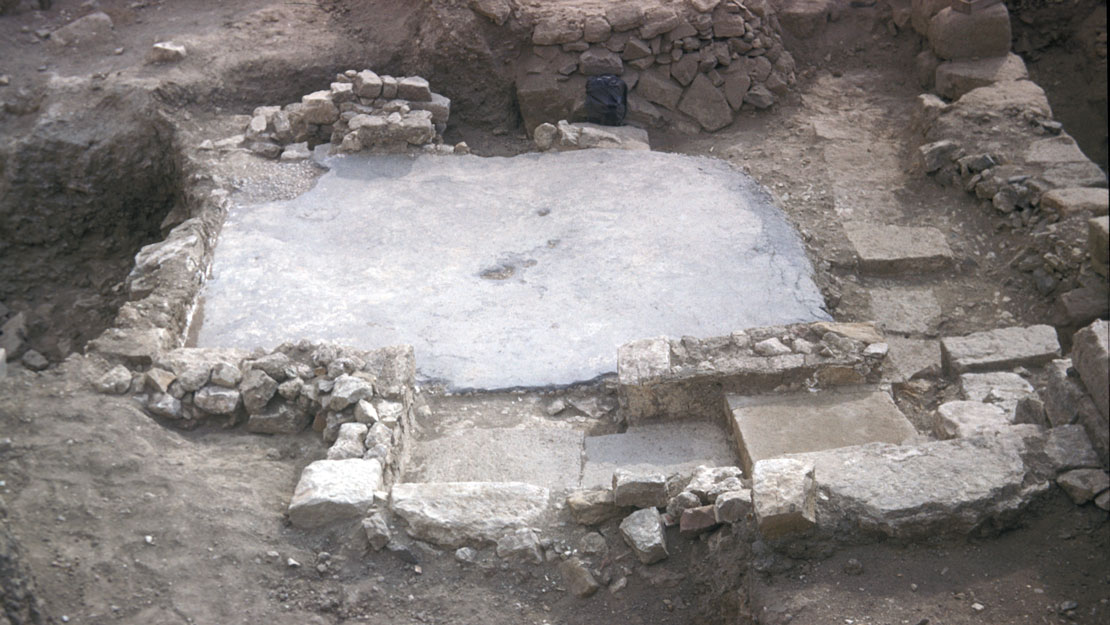



Imported Pottery at Gordion
During the period of Achaemenid control, pottery came to Gordion from Athens, Corinth, Lakonia (Sparta), and “East Greece” (an unidentified production center or centers on the west coast of Turkey). Imported pottery from Athens dominated imports as it did at many sites around the Mediterranean. Gordion received very fine quality black-glazed and figural pottery, including vases by first rank painters such as the Pistoxenos Painter and the Penthesileia Painter. Delicate black-glazed cups with walls of less than 2 mm thickness and fine incised and stamped patterns arrived in the late 5th century B.C. As in the period of Phrygian rule, the main forms are for drinking, but oinochoai, and lekythoi now complement the cups.As Keith DeVries has noted, some of the images on the imported pottery seem “tailor made” if not commissioned or selected with the Gordion consumer in mind. Some of the figural wares feature scenes with “easterners” or at least what Athenians thought easterners looked like. A group of fine Attic rhyta with Amazons by the Sotades Painter must have further appealed to the Achaemenid and Phrygian love of plastic rhyta.
The presence of Greek and East Greek products in Phrygian Gordion attests to its cosmopolitanism. Drinking cup shapes and kraters were particularly welcomed at this time. It is unclear whether shapes such as skyphoi and kylixes, used as part of the wine drinking symposium in the Greek world, maintained their function among Phrygian dining customs. It does not appear that the Phrygians of Gordion imported entire “sets” of sympotic equipment, so it is more likely that the imports complemented indigenous commensual rituals (be it of beer or wine) and helped to distinguish the status of their users.

Late Achaemenid Gordion
Excavations on the Citadel Mound have revealed evidence of a great structural collapse dated by imported Greek ceramics to around 400 BCE. It is marked by the destruction of ashlar buildings in the citadel complex, including Building A, the Mosaic Building, and the Painted House. Roof tiles and other debris covered their floors, and there was evidence for scattered fires. This “destruction level” has been attributed to an earthquake.
Around this time (395 BCE), Gordion was attacked by the army of the Spartan king, Agesilaos, as part of a wide-ranging raid through the western satrapies. Greek texts (the Oxyrynchus Historian and Xenophon) indicate that this assault on poorly fortified Gordion lasted several days, but it failed due to a spirited Persian defense, and Agesilaos moved on.
Late Achaemenid (or “Late Phrygian”) Gordion (ca. 400–330 BCE) has a distinctly provincial quality, far removed from the greatness of the past. In this period little remained of Gordion’s once striking monumental architecture, and the strong impression that we get from contemporary Greek writers is that the site had become minor in comparison with the great cities of southwest Phrygia, Kelainai and Kolossai. There is so far no evidence for elite tumulus burials from late Achaemenid Gordion (they reappear in Hellenistic times) and none for the “Greco-Persian” grave steles characteristic of other districts of the two Phrygian satrapies.
On the Citadel Mound, excavations have revealed that most of the earlier, monumental ashlar halls had been demolished and their stone plundered for the construction of rather shabby semi-subterranean houses, workshops or cellars, and other small buildings.
Nevertheless, Gordion was still a large settlement with good communications, and it remained important as an industrial and commercial center. It continued to attract trade goods: Greek fine-ware pottery (predominantly Attic) arrived in even greater numbers than before, and Greek wine was now a common import. There was, as well, intensive workshop production at the site, in metal, alabaster, and bone.
The administrative geography of the Persian empire may help explain the relative decline of Gordion by late Achaemenid times, far removed as it now was from the main centers of power.

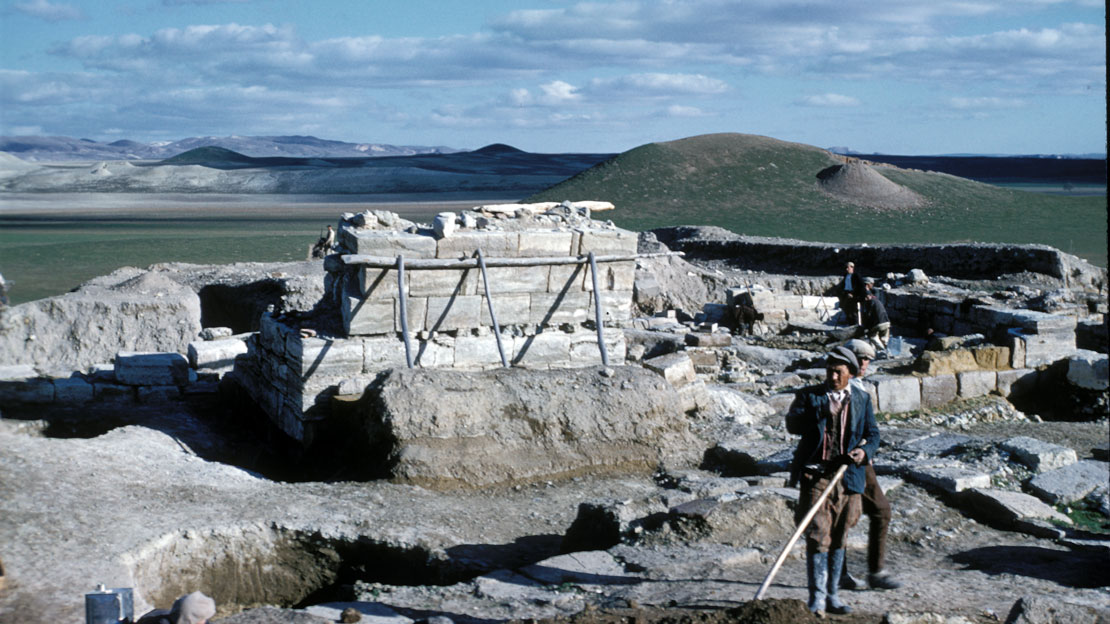
Further Reading
- DeVries, K. 1997. “The Attic Pottery from Gordion,” in Athenian Potters and Painters, ed. J. Oakley, W.D.E. Coulson and O. Palagia, Oxford, pp. 447–455.
- Kohler, E. L. 1980. “Cremations of the Middle Phrygian period at Gordion,” in From Athens to Gordion: The Papers of a Memorial Symposium for Rodney S. Young (University Museum Papers 1), ed. K. DeVries, Philadelphia, pp. 65–70.
- Mellink, M. J. 1980. “Archaic Wall Paintings from Gordion,” in From Athens to Gordion: The Papers of a Memorial Symposium for Rodney S. Young (University Museum Papers 1), ed. K. DeVries, Philadelphia, pp. 91–98.
- Voigt, M.M., and Young, T. C. Jr. 1999. “From Phrygian Capital to Achaemenid Entrepot: Middle and Late Phrygian Gordion,” Iranica Antiqua 34, pp. 192–240.
- Young, R.S. 1965. “Early Mosaics at Gordion,” Expedition 7 (Spring), pp. 4–13.

